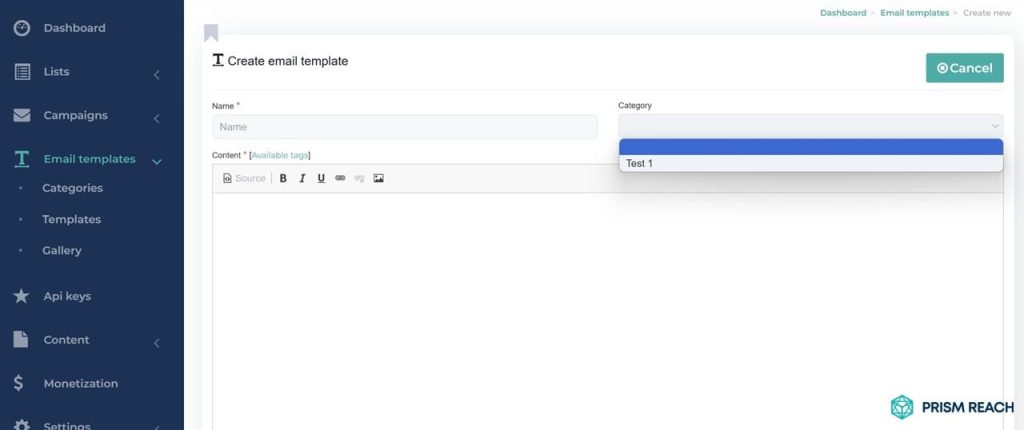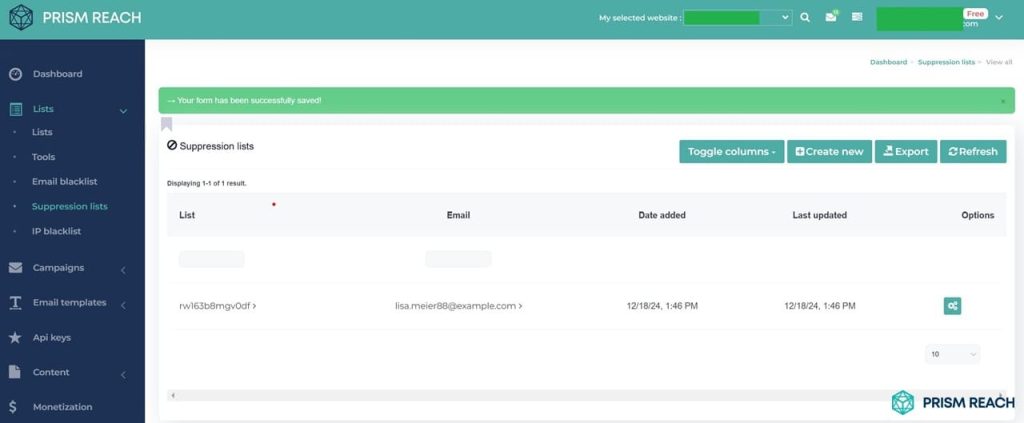In today’s digital landscape, email marketing remains a cornerstone of effective customer engagement and business growth. As we navigate through 2024, the importance of a robust email marketing strategy has never been more pronounced. With the global email marketing market projected to continue its growth, businesses are increasingly recognizing the power of this channel to drive conversions and foster customer loyalty.
However, as inboxes become more crowded and consumer expectations evolve, simply sending out mass emails is no longer enough. The key to success lies in crafting personalized, engaging, and data-driven email campaigns that resonate with your audience. This article explores cutting-edge strategies to elevate your email marketing game and achieve measurable results in an ever-competitive digital marketplace.
Key Facts
- Personalized email campaigns can increase revenue by up to 760% compared to generic bulk emails.
- Mobile-optimized emails account for 41.9% of all email opens, emphasizing the need for responsive design.
- Automated email campaigns can lead to a 320% increase in revenue compared to non-automated emails.

Mastering the Art of Email Marketing: Strategies for Success
The foundation of any successful email marketing strategy lies in understanding your audience and delivering value. Neil Patel, a renowned digital marketing expert, emphasizes, “The key to effective email marketing is not just about sending emails, but about sending the right emails to the right people at the right time.” This insight underscores the importance of precision and relevance in email marketing campaigns. It’s not merely about reaching a wide audience, but about connecting with the right individuals in a meaningful way that resonates with their needs, interests, and behaviors.
To achieve this level of precision, consider implementing these proven strategies. Each of these approaches has been tested and refined by industry leaders and successful marketers. They represent a comprehensive toolkit for elevating your email marketing efforts from good to great. By incorporating these strategies into your email marketing plan, you can create more engaging, personalized, and effective campaigns that drive results and foster stronger relationships with your audience.
1. Segment Your Audience
Dividing your email list into specific groups based on demographics, behavior, or preferences is a crucial step in creating more targeted and relevant content delivery. Segmentation allows you to tailor your messages to specific subsets of your audience, increasing the likelihood that your emails will resonate with recipients.
For example, you might segment based on factors such as purchase history, engagement level, geographic location, or expressed interests. This approach enables you to craft messages that speak directly to the needs and interests of each group, rather than sending generic emails to your entire list. By doing so, you can significantly improve open rates, click-through rates, and overall engagement.
Segmentation also helps in reducing unsubscribe rates, as subscribers are more likely to find value in emails that are relevant to their specific situation or interests. Implementing segmentation may require more initial effort in terms of data collection and analysis, but the improved results and stronger customer relationships make it well worth the investment.
2. Personalize Your Content
Going beyond using the recipient’s name, personalizing content based on past interactions, purchase history, and expressed interests can dramatically improve the effectiveness of your email campaigns. This level of personalization makes each recipient feel that the email was crafted specifically for them, increasing the likelihood of engagement.
You can personalize various elements of your emails, including product recommendations, content suggestions, and even the timing of your sends. For instance, if a customer has previously purchased running shoes, you might send them information about running accessories or upcoming local marathons. Or, if a subscriber has shown interest in specific topics on your website, you can tailor your newsletter content to focus on those areas.
Advanced personalization techniques might involve using dynamic content blocks that change based on the recipient’s profile or behavior. The key is to use the data you have ethically and effectively to create a more relevant and engaging email experience for each subscriber.

3. Optimize for Mobile
With over 40% of emails being opened on mobile devices, ensuring your emails are responsive and easy to read on smaller screens is no longer optional—it’s essential. Mobile optimization involves more than just making your emails readable on a smartphone; it’s about creating an experience that’s seamless and enjoyable on any device.
This includes using a responsive design that automatically adjusts to different screen sizes, keeping your subject lines concise (as mobile devices often show fewer characters), and using a single-column layout for easy scrolling. It’s also important to consider the size and placement of buttons and links, making them large enough and spaced appropriately for easy tapping on a touchscreen. Images should be optimized for quick loading on mobile networks, and alt text should be used in case images don’t load.
Additionally, consider the length of your emails; mobile users often prefer shorter, more digestible content. By prioritizing mobile optimization, you ensure that a significant portion of your audience has a positive experience with your emails, leading to higher engagement rates and better overall campaign performance.
4. Implement A/B Testing
Continuously testing different elements of your emails, such as subject lines, CTAs, and content, is crucial for refining your approach and maximizing the effectiveness of your campaigns. A/B testing, also known as split testing, involves creating two versions of an email with one variable changed, then sending each version to a small portion of your audience to see which performs better.
The winning version is then sent to the remainder of your list. This data-driven approach takes the guesswork out of email optimization and allows you to make decisions based on actual subscriber behavior. You can test various elements, including subject lines (length, personalization, use of emojis), email content (length, tone, layout), call-to-action buttons (color, text, placement), send times, and even sender names. It’s important to test one element at a time to clearly identify what impacts performance.
Regular A/B testing helps you understand your audience’s preferences and behaviors, allowing you to continually improve your email marketing strategy over time. This iterative process of testing and refinement can lead to significant improvements in open rates, click-through rates, and conversions.
5. Leverage Automation
Setting up triggered emails based on specific actions or milestones to engage customers at critical touchpoints is a powerful way to enhance your email marketing strategy. Automation allows you to send timely, relevant messages without manual intervention, ensuring that you’re reaching customers at the right moment in their journey.
Common types of automated emails include welcome series for new subscribers, abandoned cart reminders, post-purchase follow-ups, and re-engagement campaigns for inactive subscribers. These automated workflows can be set up to trigger based on various actions or inactions, such as signing up for a newsletter, making a purchase, or not opening emails for a certain period.
The key to effective automation is to ensure that each email in the sequence provides value and moves the customer along in their journey with your brand. For example, a welcome series might start with a thank you message, followed by an introduction to your brand’s values, then a showcase of popular products or content. By leveraging automation, you can create a more personalized and timely experience for your subscribers, leading to increased engagement and conversions.

Hidden Gem Strategies
Beyond the core factors, there are unique strategies that can significantly enhance your ability to navigate the evolving privacy landscape in email marketing. Here are five hidden gem strategies that leverage unique features of various platforms to maximize engagement and maintain compliance:
1. Dynamic Content Blocks
Instead of static content, use dynamic content blocks that change based on user behavior or preferences. This can include personalized product recommendations or tailored messages that reflect the recipient’s past interactions with your brand. Dynamic content ensures that each email feels unique and relevant, increasing the likelihood of engagement.
2. Behavioral Trigger Emails
Implement emails triggered by specific user actions, such as browsing a product without purchasing or abandoning a cart. These timely reminders can significantly increase conversion rates by re-engaging users when they are most interested. Behavioral trigger emails are highly relevant and personalized, making them more effective than generic follow-ups.
3. Interactive Email Elements
Incorporate interactive features like polls, quizzes, or embedded videos directly within your emails. This not only enhances engagement but also allows recipients to interact without leaving their inbox, making the experience more enjoyable. Interactive elements can provide valuable insights into subscriber preferences and behaviors, informing future campaigns.
4. Preference Centers
Create a preference center where subscribers can choose the type of content they want to receive and how often they want to hear from you. This empowers users and can lead to higher engagement rates as they receive more relevant content. Preference centers also help in maintaining compliance with data privacy regulations by giving users control over their data.
5. Gamification Techniques
Introduce gamification elements in your emails, such as challenges or rewards for completing certain actions (e.g., referring friends or making purchases). This can motivate subscribers to engage more actively with your brand. Gamification not only makes emails more fun and engaging but also encourages behaviors that drive business goals.
Innovative Solutions by Prism Reach
While implementing these strategies is essential, leveraging innovative tools can further enhance your email marketing efforts in a privacy-conscious world. Prism Reach is an AI-powered SaaS solution designed to enhance the effectiveness of email marketing campaigns through deep personalization. This platform stands out by transforming how publishers and content creators engage with their audiences, using sophisticated AI algorithms to customize every aspect of newsletters based on subscriber behavior and preferences.
Key Benefits of Prism Reach:
- Increased Engagement: Publishers report up to 40% higher engagement rates due to the personalized nature of the content.
- Higher Revenue: Tailored advertising and efficient content targeting lead to higher monetization rates for published newsletters.
- Improved Productivity: Automation and AI-driven insights significantly reduce the time required to create and manage campaigns.
Prism Reach’s core functionality revolves around its proprietary AI technology, which clusters website content and social media posts into relevant categories. This AI uses a variety of data points to create detailed user avatars, enabling personalized newsletter content that incorporates factors such as location, engagement history, and predicted interests. The system’s ability to analyze vast amounts of data allows for highly targeted marketing strategies.

Benefits of Prism Reach in Privacy-Compliant Marketing
- Advanced Personalization: Prism Reach leverages AI to create highly personalized content without invasive data collection, respecting user privacy while enhancing engagement.
- Compliance Assurance: The platform ensures GDPR compliance by hosting data within Europe and adhering to the highest standards of data protection.
- Efficient Campaign Management: Automation and AI-driven insights streamline campaign creation and management, allowing marketers to focus on strategy rather than manual tasks.
6. Utilize Adaptive Testing in Prism Reach
Prism Reach’s adaptive testing feature allows you to test multiple variations of your email content simultaneously. Unlike traditional A/B testing, adaptive testing automatically adjusts traffic distribution based on performance, identifying the best-performing content more efficiently. This ensures that your emails are always optimized for maximum engagement and conversion.
7. Leverage Prism Reach’s AI-Powered Personalization
Prism Reach’s AI-driven personalization capabilities enable you to deliver highly relevant content based on subscriber behavior and preferences. By analyzing first-party data, Prism Reach ensures that each email is tailored to the individual, enhancing the user experience while maintaining privacy compliance.
8. Integrate Prism Reach’s Data Security Features
With Prism Reach, data security is paramount. The platform includes advanced security measures such as encryption and regular security audits, ensuring that subscriber data is protected against breaches and unauthorized access. This commitment to data security builds trust with your audience and aligns with compliance requirements.
Upgrade Your Email Marketing with AI Personalization!
Conclusion
Improving your email marketing strategy is an ongoing process that requires a blend of creativity, data analysis, and technological innovation. By implementing the strategies outlined in this article and leveraging cutting-edge tools like Prism Reach, you can create email campaigns that not only reach your audience but resonate with them on a personal level.
Remember, the goal of email marketing is not just to fill inboxes, but to build lasting relationships with your customers. As you refine your approach, always keep the recipient’s needs and preferences at the forefront. With persistence, analysis, and the right tools, you can turn your email marketing into a powerful engine for growth and customer engagement.